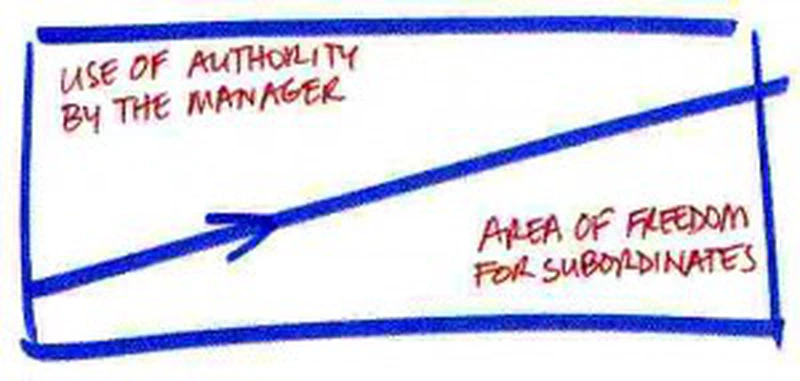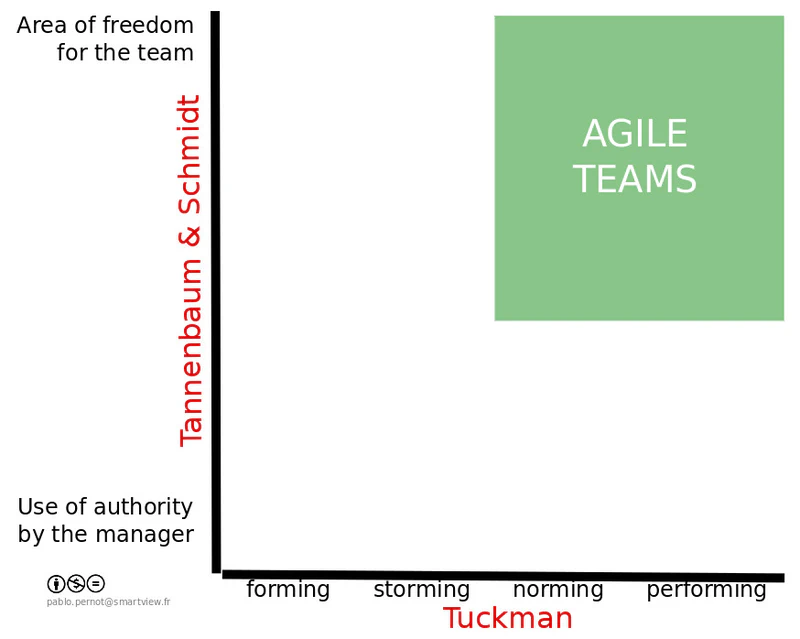While expanding one of my course materials, I stumbled upon (it must be said) the “Delegation and Team Development Model” by Tannenbaum & Schmidt at Business Balls (an evocative name, for that matter).

When dealing with team and management questions in agile, we often refer to Tuckman’s model concerning team evolution. In a few words, too brief:
forming: the team forms, discovering each other
storming: the team structures itself with pain, competition, rivalry, etc.
norming: the team has calibrated itself, it knows how to work together to achieve a common goal. (This stage is not necessarily reached one day…)
performing: The team’s capacity is greater than the sum of the capacities of the individuals who constitute it. The team excels. (This one neither…)
Yes it’s true, we experience it every day, and it’s very interesting and it concerns the development of the team itself. This Tannenbaum & Schmidt delegation and team development model that I’m discovering today complements this approach to developing an agile team, particularly in its -extremely important- relationship with management. What does this model tell us? As the image at the top left indicates: the more autonomy and freedom the team has, and the more the manager lets the team emancipate itself, the more it can deliver remarkable results (also worth mentioning perhaps in its relationship with the product owner).
Tannenbaum & Schmidt describe 7 stages (I invite you to refer to the article linked here for more details):
1. The manager decides and announces the decision
2. The manager decides and “sells” the decision to the group
3. The manager presents the decision with general ideas and invites reflection
4. The manager suggests a decision and invites reflection
5. The manager presents the situation, listens to suggestions and decides
6. The manager presents the situation, defines the constraints and asks the team to decide
7. The manager allows the team to identify the problem, develop options, decide on the solution. The manager is informed of constraints by the team.
By combining the two, we really have visibility on the target for agile teams. I’ll allow myself a small diagram and wish you well.
